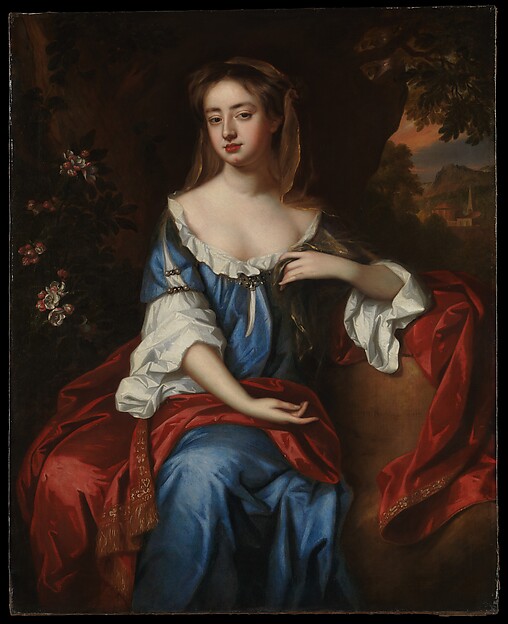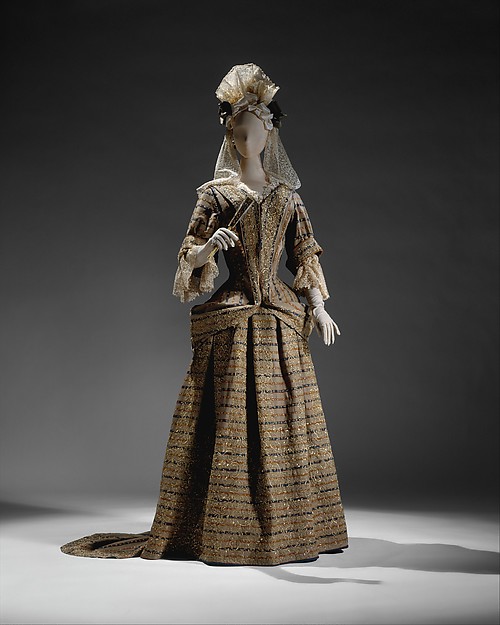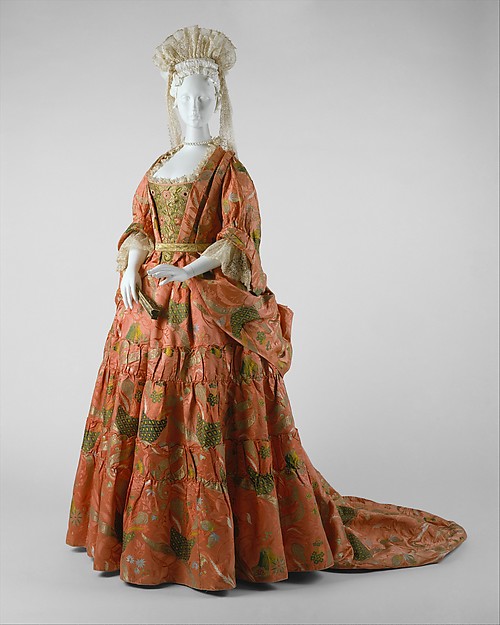The Mantua
I was thinking about making this post the other night, when a profound revelation came upon me: I am a costuming/fashion history hipster. In American Nerd, Ben Nugent defines two important aspects of hipsterism. One is purism, as a reaction against the Baby Boomer eclecticism, and the other is an attachment to an "unfashionable" subject (although he's talking about "fake nerd" hipsters and fake attachments). I try to always use period methods of construction and hand-sewing, and I love aspects of fashion history that happen to be overlooked or glossed over by others. Now, some of that is because the types of clothes I like best are forerunners to styles where they, shall we say, sell out and lose their integrity, but it is not out of the question that I subconsciously prefer comparatively obscure areas because to show that I'm Interesting.
Anyway. I love the mantua so much.
As you saw in my post on court dress, the clothing of the wealthy during the seventeenth century was restrictive and stiff. The life of those same classes were incredibly public, with much formal socializing and business taking place in the bedroom. In the later part of the century there was a reaction against this: the wealthy began to have their homes built with small "closets" where they could be alone, the bedroom began to be reserved for use at night, and a style of negligée dress emerged for people to wear only when they were not on display.
This dress was loose and unfitted, essentially a front-opening tube with sleeves. It became popular for the nobility to be painted in "undress", which showed how excitingly modern their ideas were.
Men had a similar form of undress called the banyan: a full robe, imported from the east, which showed not only his beliefs on the importance of privacy but his knowledge of and interest in the world.
Both garments trickled down the ranks, and as the women's became more common it also became more fitted and suitable for wear in public. It became known as the mantua, probably as a corruption of the French term for the same garment, manteau; it was mostly shaped through pleating and featured wide, elbow-length sleeves. While the earlier mantuas were worn closed or sewn together in the front, it quickly became fashionable to pull the skirts of the gown entirely to the back to display a decorative petticoat.
This way of styling the dress, in conjunction with the tall headdress of starched lace called a fontange, led to a generally vertical impression.
At first the bodice of the mantua closed over the stays in front, but around the turn of the century a stomacher was added.
The stomacher offered an opportunity to create a wider neckline, more similar to the robe de cour. I am not exactly sure when the skirts of the gown began to be commonly made closed (or large enough to be worn so), but it must have been sometime in the period 1710-1725. Around the same time, it became more important for the bodice to fit more snugly to the stays, the apron became a more common accessory for women who wore it only in a decorative fashion, and white handkerchiefs were worn tucked into the neckline for modesty and style. Sometimes these filled in the front of the dress, which tied closed over it.
Anyway. I love the mantua so much.
As you saw in my post on court dress, the clothing of the wealthy during the seventeenth century was restrictive and stiff. The life of those same classes were incredibly public, with much formal socializing and business taking place in the bedroom. In the later part of the century there was a reaction against this: the wealthy began to have their homes built with small "closets" where they could be alone, the bedroom began to be reserved for use at night, and a style of negligée dress emerged for people to wear only when they were not on display.
This dress was loose and unfitted, essentially a front-opening tube with sleeves. It became popular for the nobility to be painted in "undress", which showed how excitingly modern their ideas were.
The Grand Dauphin and his Family, Mignard, 1687
Men had a similar form of undress called the banyan: a full robe, imported from the east, which showed not only his beliefs on the importance of privacy but his knowledge of and interest in the world.
Both garments trickled down the ranks, and as the women's became more common it also became more fitted and suitable for wear in public. It became known as the mantua, probably as a corruption of the French term for the same garment, manteau; it was mostly shaped through pleating and featured wide, elbow-length sleeves. While the earlier mantuas were worn closed or sewn together in the front, it quickly became fashionable to pull the skirts of the gown entirely to the back to display a decorative petticoat.
Manteau, Bonnard, 1685-1690
This way of styling the dress, in conjunction with the tall headdress of starched lace called a fontange, led to a generally vertical impression.
At first the bodice of the mantua closed over the stays in front, but around the turn of the century a stomacher was added.
The stomacher offered an opportunity to create a wider neckline, more similar to the robe de cour. I am not exactly sure when the skirts of the gown began to be commonly made closed (or large enough to be worn so), but it must have been sometime in the period 1710-1725. Around the same time, it became more important for the bodice to fit more snugly to the stays, the apron became a more common accessory for women who wore it only in a decorative fashion, and white handkerchiefs were worn tucked into the neckline for modesty and style. Sometimes these filled in the front of the dress, which tied closed over it.
A Family of Three at Tea, Richard Collins, ca. 1727
Ashley Cowper with his Wife and Daughter, William Hogarth, ca. 1731
Frederick, Prince of Wales, and his Sisters, Philip Mercier, 1733














Comments
Post a Comment